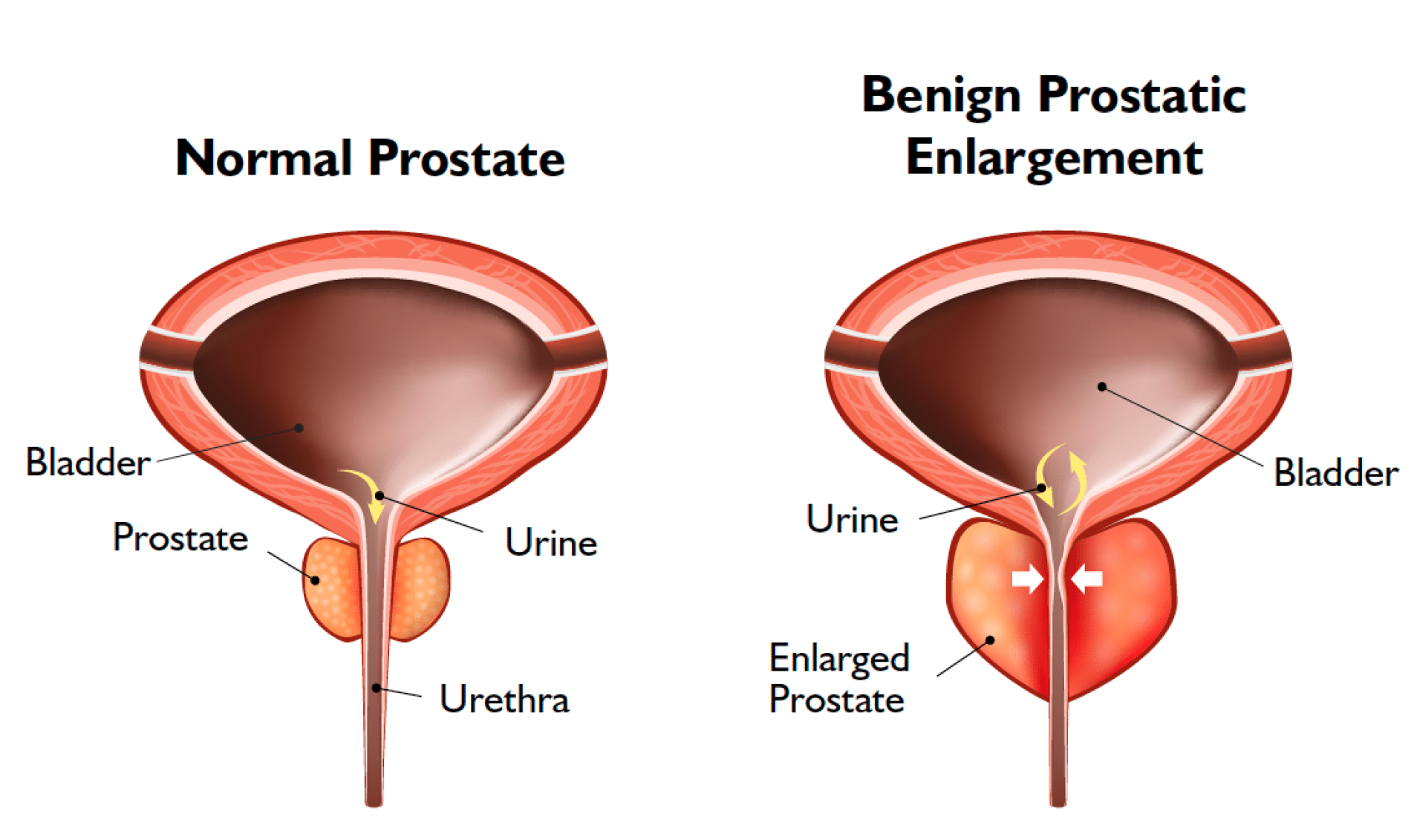Could you be at risk of
Benign Prostatic Hyperplasia (BPH)?
Here are common urinary symptoms* of BPH:
Frequent need for the toilet, day and night
Weak, slow or intermittent streams
Difficulty or delay in starting
Feeling of unemptied bladder
* Not to be confused with symptoms of prostate cancer.
BPH affects over 660 million men1,2
BPH is a very common condition and can hamper your quality of life. It affects 40% of men in their 50s, and over 70% of men by their 60s.

What happens to your prostate as you age?
The prostate is a male reproductive organ that is the size and shape of a walnut. Its main function is to produce the prostatic fluid, which forms part of semen and is released during ejaculation.
As a normal part of ageing, your prostate can start to become larger around the age of 40-50. This often leads to BPH.

How can BPH affect you?
BPH in older men is strongly linked to the development of lower urinary tract symptoms (LUTS)3
Obstructed Urinary Tract
A narrowed tract can lead to lead to difficulty urinating and in severe cases an inability to urinate, requiring a catheter and possibly surgery.
Urinary Tract Infection (UTI)
An inability to fully empty the bladder increases the risk of infection. If left untreated it may lead to permanent bladder damage.4
Bladder Stones & Damage
In a small percentage of men, bladder stones may form when too much urine is left in the bladder over time. BPH increases that risk of stone formation for those men. In these cases bladder stones can lead to further obstruction, irritation, infection, and bleeding.5 Retention of urine over time can result in irreversible damage to the bladder in some patients.4
Get diagnosed and treated early.
Do not let BPH ruin your quality of life.

